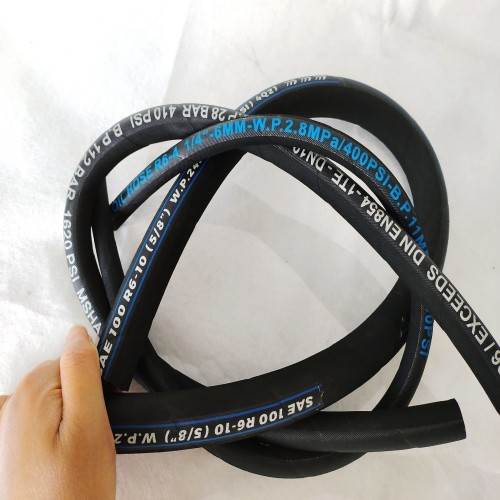12 月 . 04, 2024 16:40 Back to list
Hydraulic Hose Assembly and Fitting Production for Industrial Applications
Understanding Hydraulic Hose Assemblies and Fittings A Manufacturer's Perspective
Hydraulic systems play a crucial role in a multitude of industries, ranging from construction and agriculture to manufacturing and automotive applications. At the heart of these systems lies a network of hydraulic hose assemblies and fittings that facilitate the efficient transfer of hydraulic fluid. As a manufacturer specializing in these components, it is essential to delve into the intricacies of hydraulic hose assemblies and fittings, understanding their design, production process, and importance in various applications.
What are Hydraulic Hose Assemblies?
Hydraulic hose assemblies are integrated systems that consist of hoses, fittings, and often additional components like adapters and couplings. These assemblies are designed to transport hydraulic fluid—usually oil—under high pressure, enabling the operation of machinery and equipment. The quality and durability of these assemblies are paramount, as they must withstand not only high pressures but also temperature fluctuations and exposure to chemicals and environmental conditions.
Types of Hydraulic Hoses
There are several types of hydraulic hoses, each tailored for specific applications. Typically, hydraulic hoses are categorized based on their construction and reinforcement
1. Wire-Reinforced Hoses These hoses feature metal wire braiding, providing strength and resistance against high pressure. They are suitable for heavy machinery and high-load applications. 2. Fiber-Reinforced Hoses Made with synthetic fibers, these hoses are lighter and more flexible, making them ideal for applications where weight reduction is critical.
3. Thermoplastic Hoses These are designed for lighter applications, combining flexibility and durability, often used in agriculture and aerospace.
4. Specialty Hoses Certain applications require hoses that can withstand extreme temperatures or exposure to aggressive chemicals. Manufacturers often produce custom hoses to meet these specific requirements.
The Importance of Fittings
hydraulic hose assemblies & fittings manufacturer

Fittings are another crucial component of hydraulic systems, acting as connectors between hoses and other system components, such as pumps, cylinders, and valves. The right fitting not only ensures secure connections but also prevents leaks that can lead to system failures. Fittings come in various designs, including
- Swivel Fittings These allow for rotation to avoid twisting the hose during installation and operation. - Push-to-Connect Fittings These facilitate quick connections and disconnections, enhancing operational efficiency. - Flared and Flangeless Fittings Ideal for high-pressure applications where leak prevention is critical.
Manufacturing Process
The manufacturing of hydraulic hose assemblies and fittings involves several meticulous steps. Quality control is vital at every stage to meet industry standards. The production process typically includes
1. Material Selection High-grade materials such as synthetic rubber, steel, and composites are chosen for their strength and resistance.
2. Assembly Hoses are cut to length, and fittings are attached either through crimping or threading, depending on the design.
3. Testing Each assembly undergoes rigorous testing to ensure it can withstand specified pressures and conditions. This may include burst tests, leakage tests, and flexibility tests.
4. Quality Assurance Inspections are conducted to verify each assembly’s integrity, ensuring they meet safety and performance standards.
Conclusion
As a manufacturer of hydraulic hose assemblies and fittings, understanding the importance of quality, material selection, and the manufacturing process is essential. The efficiency and safety of hydraulic systems hinge on reliable components. With advancements in technology and materials, manufacturers are continuously innovating, aiming to produce more efficient, durable, and environmentally friendly solutions. As industries evolve, so too must the components that support them, driving the need for ongoing research and development in this essential field. Hydraulics remain a vital force in modern technology, and high-quality hose assemblies and fittings are indispensable in ensuring their smooth operation.
-
EN857 2SC Hydraulic Hose Suppliers OEM & China Manufacturers
NewsMay.30,2025
-
51mm Hydraulic Hose Manufacturer China OEM Durable & Custom Solutions
NewsMay.30,2025
-
OEM Rubber Air Hose Supplier Durable Custom Solutions
NewsMay.29,2025
-
High-Pressure Wrapped Cover Steel Wire Spiral Hydraulic Hose Supplier
NewsMay.29,2025
-
Rubber water suction and discharge hose
NewsMar.07,2025
-
SAE 100 R6/EN 854 R6 Fibre Braided Oil Hose
NewsMar.07,2025



